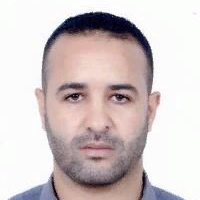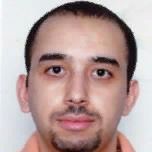International Journal of Image, Graphics and Signal Processing (IJIGSP)
IJIGSP Vol. 10, No. 5, 8 May 2018
Cover page and Table of Contents: PDF (size: 2224KB)
Cyclic Analysis of Extra Heart Sounds: Gauss Kernel based Model
Full Text (PDF, 2224KB), PP.1-14
Views: 0 Downloads: 0
Author(s)
Index Terms
Extra heart sound, phonocardiogram modeling, cyclostationarity, cyclic statistics, Gabor kernel, diseases of heart
Abstract
Phonocardiograms (PCG) Phonocardiograms (PCG) are recordings of the acoustic waves produced by the mechanical action of the cardiac system. This makes PCG an effective method for tracking the progress of heart diseases. A PCG signal, in the healthy case, consists of two fundamental sounds s1 and s2. These two elements are derived from the mechanical functioning of the heart. A triple rhythm in diastole is called a gallop and results from the presence of a heart sound s3, s4 or both. An Extra Heart Sound (EHS) may not be a sign of disease. However, in some situations it is an important sign of disease, which, if detected early, could save lives. The major aim of this study is to propose cyclostationary and Gabor kernel based mathematical model for extra heart sounds. The ambition behind it is to present a framework, making use of cyclic statistics for robustness to low SNR conditions, which allow the detection of EHS s3 and s4 and hence the early identification of some heart diseases. For this reason, the proposed model is compared with the one of normal PCG signal [17] in order to set up the differences allowing the early detection of EHS. Lastly, this research is proved on experimental data sets.
Cite This Paper
A. Choklati, K. Sabri," Cyclic analysis of extra heart sounds: Gauss kernel based model ", International Journal of Image, Graphics and Signal Processing(IJIGSP), Vol.10, No.5, pp. 1-14, 2018. DOI: 10.5815/ijigsp.2018.05.01
Reference
[1]W. A. Gardner, Introduction to Random Processes: with applications to signals and systems, Macmillan Publishing Company. New York, 1985.
[2]H. Kenneth Walker, W. Dallas Hall, and J. Willis Hurst, Clinical Methods: The History, Physical, and Laboratory Examinations, 3rd edition, Butterworths, 1990.
[3]W. A. Gardner, Two alternative philosophies for estimation of the parameters of time-series, IEEE Transactions on Information Theory, 37(1), 216-218, (1991).
[4]W. A. Gardner, Cyclostationarity in communications and signal processing, Statistical Signal Processing, IncYountville,CA1994.
[5]X. Zhang, L. G. Durand, L. Senhadji, H. C. Lee, and J. L. Coatrieux, Analysis-synthesis of the phonocardiogram based on the matching pursuit method, IEEE Transactions on Biomedical Engineering, 45(8), 962-971, (1998).
[6]T. S. Leung, P. R. White, J. Cook, W. B. Collis, E. Brown and A. P. Salmon, Analysis of the second heart sound for diagnosis of paediatric heart disease, IEE Proceedings-Science, measurement and technology, 145(6), 285-290, (Nov,1998).
[7]J. Xu, L. Durand, P. Pibarot, Nonlinear transient chirp signal modeling of the aortic and pulmonary components of the second heart sound, IEEE Transactions on, Biomedical Engineering, 47(10), 1328-1335, (2000).
[8]S. M. Debbal, and F. Bereksi-Reguig, Time-frequency analysis of the first and the second heartbeat sounds, Applied Mathematics andComputation, 184(2), 1041-1052, (2007).
[9]K. Sabri, M. El Badaoui, F. Guillet, A. Belli, G. Millet, and J. B. Morin, Cyclostationary modeling of ground reaction force signals, Signal Processing, vol. 90, no. 4, pp. 1146–1152, April 2010.
[10]A. Almasi, M. B. Shamsollahi, and L. Senhadji, A Dynamical Model for Generating Synthetic Phonocardiogram Signals, In Engineering in Medicine and Biology Society, EMBC, 2011 Annual International Conference of the IEEE (pp. 5686-5689), IEEE, (August, 2011).
[11]M. R. Homaeinezhad, P. Sabetian, A. Feizollahi, A. Ghaffari, and R. Rahmani, Parametric modelling of cardiac system multiple measurement signals: an open-source computer framework for performance evaluation of ECG, PCG and ABP event detectors, Journal of medical engineering and technology, 36(2), 117-134, (2012).
[12]A. Goshvarpour, A. Goshvarpour, Recurrence plots of heart rate signals during meditation, International Journal of Image, Graphics and Signal Processing, 4(2), 44, (2012).
[13]K. Sabri, Cyclic sparse greedy deconvolution, International Journal of Image, Graphics and Signal Processing, 4(12), 1, 2012.
[14]A. Almasi, M. B. Shamsollahi, and L. Senhadji, Bayesian denoising framework of phonocardiogram based on a new dynamical model, IRBM, 34(3), 214-225, (2013).
[15]M. Jabloun, P. Ravier, O. Buttelli, R. Lédée, R. Harba, and L. D. Nguyen, A generating model of realistic synthetic heart sounds for performance assessment of phonocardiogram processing algorithms, Biomedical Signal Processing and Control, 8(5), 455-465, (2013).
[16]A. Napolitano, Cyclostationary Signal Processing and its Generalizations, IEEE Statistical Signal Processing Workshop, Gold Coast, Australia, June 29, 2014.
[17]A. Choklati, K. Sabri, and M. Lahlimi, Cyclic analysis of phonocardiogram signals, International Journal of Image, Graphics and Signal Processing(IJIGSP), (2017).
[18]A. Choklati, A. Had, and K. Sabri, On the Modeling of phonocardiogram signals: Laplace kernel and cyclostationarity based approaches, submitted toInternational Journal of Adaptive Control and Signal Processing, (2017).
[19]3M™ Littmann®Stethoscopes http: //www.littmann.ca

